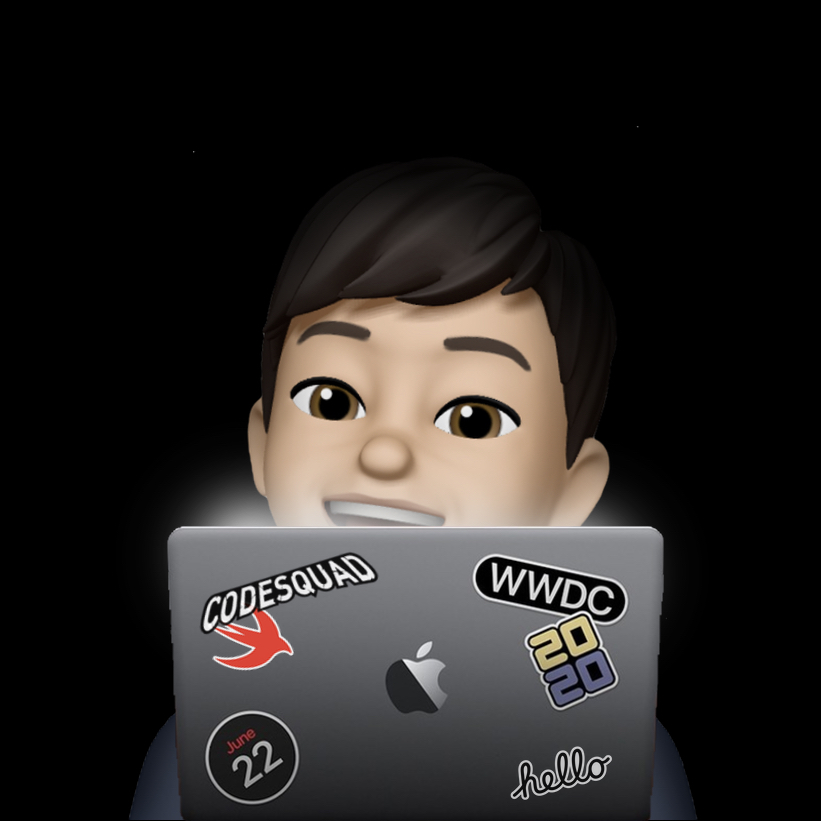iOS의 Design pattern, Delegation은 무엇인가?
Delegation
Delegate의 사전적 의미는 “특정한 일, 의무, 권리 등을 나 대신 할 수 있는 사람에게 주는 것”입니다. Delegation의 사전적 의미는 “다른 사람을 위해 하는 행동을 부여하는 것”이라고 등재되어있습니다.
사전적 의미와 비슷하게, Delegation은 하나의 객체가 프로그램에서 다른 객체를 대신하여 동작하거나 다른 객체와 함께 동작하는 간단하며 강력한 패턴입니다. Delegation을 사용할 때는 보통 두개의 객체가 필요합니다. 위임을 할 수 있는 객체인 Delegating Object, 그리고 위임받아 일을 대신해서 처리할 Delegate 객체가 필요합니다. 이러한 Delegation은 특정 행동에 반응하거나 해당 소스를 알 필요 없이 외부 소스로부터 data를 가져올 때 사용될 수 있습니다.
- Delegating Object : 직역하면 위임 객체이며, 위임할 수 있는 delegate 프로퍼티를 가지고 있습니다.
- Delegate : 대리자(Delegate)는 protocol로 캡슐화된 작업들을 채택하며, Delegating Object의 일을 대신 처리할 수 있습니다.
Delegating object는 다른 delegate 객체에 참조를 유지하고 적절한 때에 delegate 객체에게 메세지를 보낼 수 있습니다. 메세지는 Delegating object가 처리할 예정이거나 처리된 이벤트를 전달합니다. delegate는 보여지는 부분, 앱 안의 자신 또는 다른 객체들의 상태를 업데이트하여 메세지에 응답 할 수 있습니다. 때로는 값을 리턴할 수 있는데, 그 값은 걸쳐진 이벤트가 어떻게 처리되는 지에 영향을 주기도 합니다. Delegation의 가장 큰 장점은 하나의 중심 객체에서 여러 객체의 동작을 쉽게 커스터마이징할 수 있게 해준다는 것입니다.
Delegation and the Cocoa Frameworks
Delegating object는 보통 프레임워크 객체이고, delegate는 보통 커스텀 컨트롤러 객체입니다. Swift의 ARC와 같은 메모리가 관리되는 환경에서는, 강한 순환 참조를 방지하기 위해 delegating object는 약한 참조를 delegate에 유지합니다. garbage-collected 환경에서는, receiver는 강한 참조를 delegate에 유지한다고 합니다. Delegation 예제는 Foundation, UIKit, AppKit, 그리고 다른 Cocoa, Cocoa Touch 프레임워크에 많이 있습니다.
Delegating object의 예시로 AppKit 프레임워크의 NSWindow 클래스의 인스턴스라고 하겠습니다. NSWindow는 windowShouldClose:라는 메소드를 가지고 있는 프로토콜(NSWindowDelegate)을 선언합니다. 사용자가 윈도우의 닫기를 클릭하면, 윈도우 객체는 windowShouldClose: 를 delegate에 보내서 윈도우 객체의 닫기를 확인하도록 요청합니다. 보통 커스텀 컨트롤러인 delegate는 Boolean 값을 리턴하여 윈도우 객체의 동작을 대신하여 처리합니다. 프로토콜에 있는 windowShouldClose: 안에 커스텀하게 구현을 하여 현재 상황에 맞게 값을 리턴할 수 있습니다.
- Delegating Object : 프레임워크 객체
- Delegate : 커스텀 컨트롤러 객체

Delegation and Notification
Cocoa framework 클래스의 대부분의 delegate는 delegating object가 작성한 notification의 observer로 자동적으로 등록이됩니다. delegate는 특정 notification 메세지를 받기 위해 framework 클래스에 의해 선언된 notification을 처리하는 notification 메소드를 구현하면 됩니다. 위 그림에서, Delegating object인 window 객체는 NSWindowWillCloseNotification을 observer에게 보내는 것은 결국 windowShouldClose 메세지를 delegate에게 보내는 원리입니다.
Data Source
종종 UIKit에서 정의된 클래스의 protocol을 사용하다보면 delegate뿐 아니라 data source를 확인할 수 있습니다.
Data source는 delegate와 거의 동일하다고 볼 수 있습니다. 차이점은 delegating object와의 관계입니다. UI 제어를 위임받는게 아닌, data 제어를 위임받습니다. Delegating object 의 예로 보통 view 객체인 UITableView의 객체가 있는데, UITableView 객체는 data source와의 참조를 유지하며 때때로 표시할 data를 요구합니다. Data source도 delegate와 마찬가지로 protocol을 채택해야 하고, 최소한 protocol의 필수 메소드를 구현해야합니다. Data source는 delegating view에 제공하는 모델 객체들의 메모리를 관리합니다.
UIImagePickerControllerDelegate
자주 사용되는 delegation을 예시를 들어보겠습니다. FirstViewController를 통해 UIImagePickerController를 present하여 사용하려는 예제입니다.
class FirstViewController: UIViewController, UIImagePickerControllerDelegate, UINavigationControllerDelegate {
let imagePickerController = UIImagePickerController()
override func viewDidLoad() {
super.viewDidLoad()
imagePickerController.delegate = self
}
func imagePickerController(_ picker: UIImagePickerController, didFinishPickingMediaWithInfo info: [UIImagePickerController.InfoKey : Any]) {
...
}
}
UIImagePickerControllerDelegate을 채택할 때에는 일반적으로 UIImagePickerController의 객체의 상위 UIViewController 객체가 delegate역할을 하게 됩니다. UIImagePickerController의 일을 처리하기 위해서 UIImagePickerControllerDelegate, UINavigationControllerDelegate 두개의 프로토콜을 채택해야합니다.
func imagePickerController는 프로토콜에 정의된 함수로 UIImagePickerController의 특정 행동을 처리합니다.
extension을 사용하여 프로토콜 채택과 특정 행동에 대한 처리를 분리할 수도 있습니다.
class SecondViewController: UIViewController {
let imagePickerController = UIImagePickerController()
override func viewDidLoad() {
super.viewDidLoad()
imagePickerController.delegate = self
}
}
extension SecondViewController: UIImagePickerControllerDelegate, UINavigationControllerDelegate {
func imagePickerController(_ picker: UIImagePickerController, didFinishPickingMediaWithInfo info: [UIImagePickerController.InfoKey : Any]) {
...
}
}
UIImagePickerController
UIImagePickerController의 구현 부분을 살펴보면 강한 참조 순환을 방지하기 위해서 delegate 프로퍼티를 weak reference로 선언되어 있습니다.
open class UIImagePickerController : UINavigationController, NSCoding {
weak open var delegate: (UIImagePickerControllerDelegate & UINavigationControllerDelegate)?
}
UIImagePickerControllerDelegate
사용자가 UIImagePickerController 객체를 통해 미디어를 선택했을 때 실행되는 imagePickerController(_:didFinishPickingMediaWithInfo:) 메소드와 미디어 선택이 취소 됐을 때 실행되는 imagePickerControllerDidCancel(_:) 메소드입니다. 이와 같이 특정 행동에 대해서 delegate 객체가 처리할 수 있도록 프로토콜에 선언되어있습니다.
public protocol UIImagePickerControllerDelegate : NSObjectProtocol {
@available(iOS 2.0, *)
optional func imagePickerController(_ picker: UIImagePickerController, didFinishPickingMediaWithInfo info: [UIImagePickerController.InfoKey : Any])
@available(iOS 2.0, *)
optional func imagePickerControllerDidCancel(_ picker: UIImagePickerController)
}
Delegation 구조
Delegating object와 delegate가 상당히 헷갈리는 부분이기도 해서 직접 그림으로 정리를 해보았습니다.

- Delegating Object는
delegate변수를 가지고 있어 객체를 위임할 수 있다. delegate변수로 지정받는 객체는 delegate이다.- Delegate 객체는 delegating object에서 보낸 메세지나 행동에 응답한다.
피드백 주신 고마운 분들
- Lena



댓글남기기